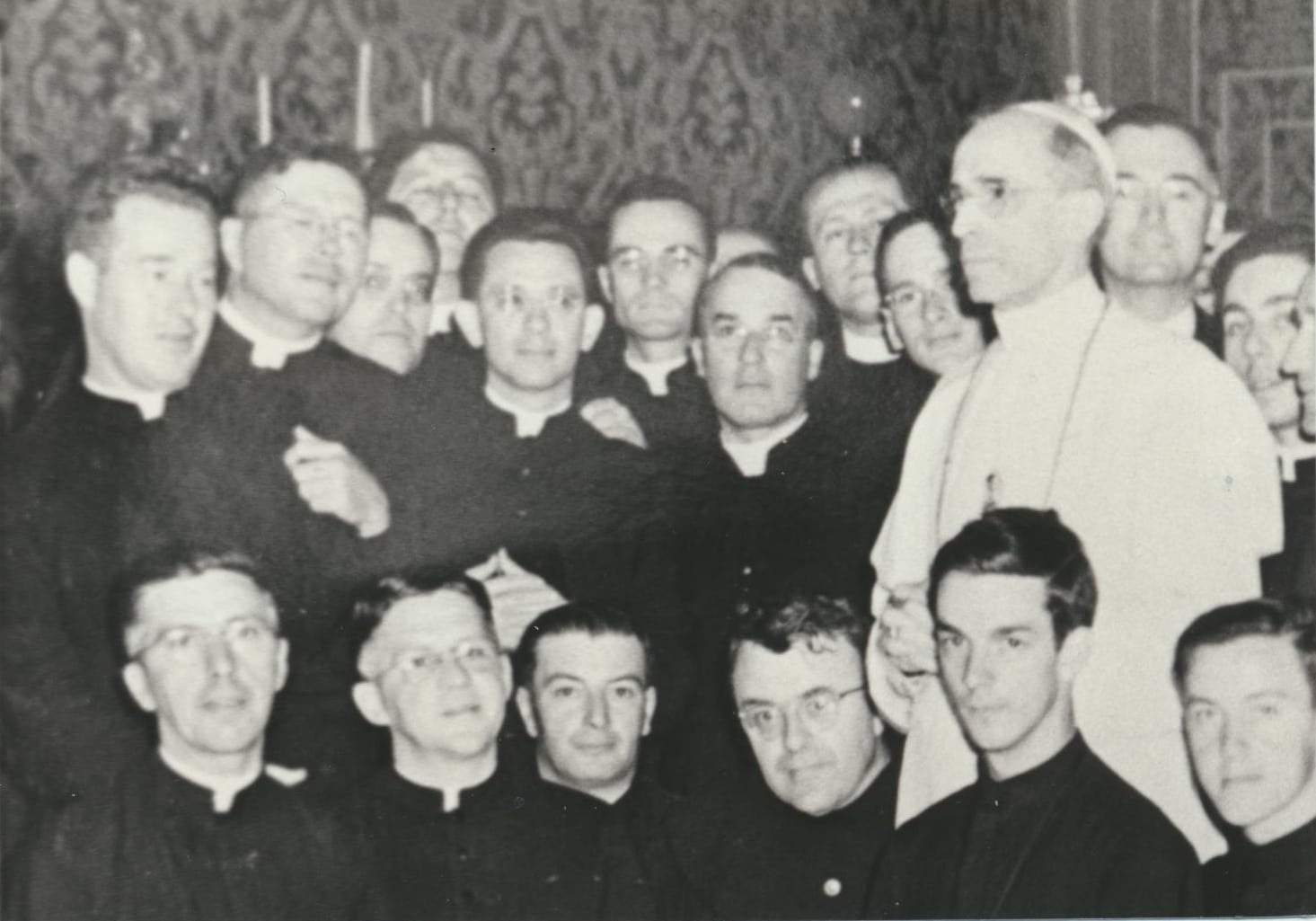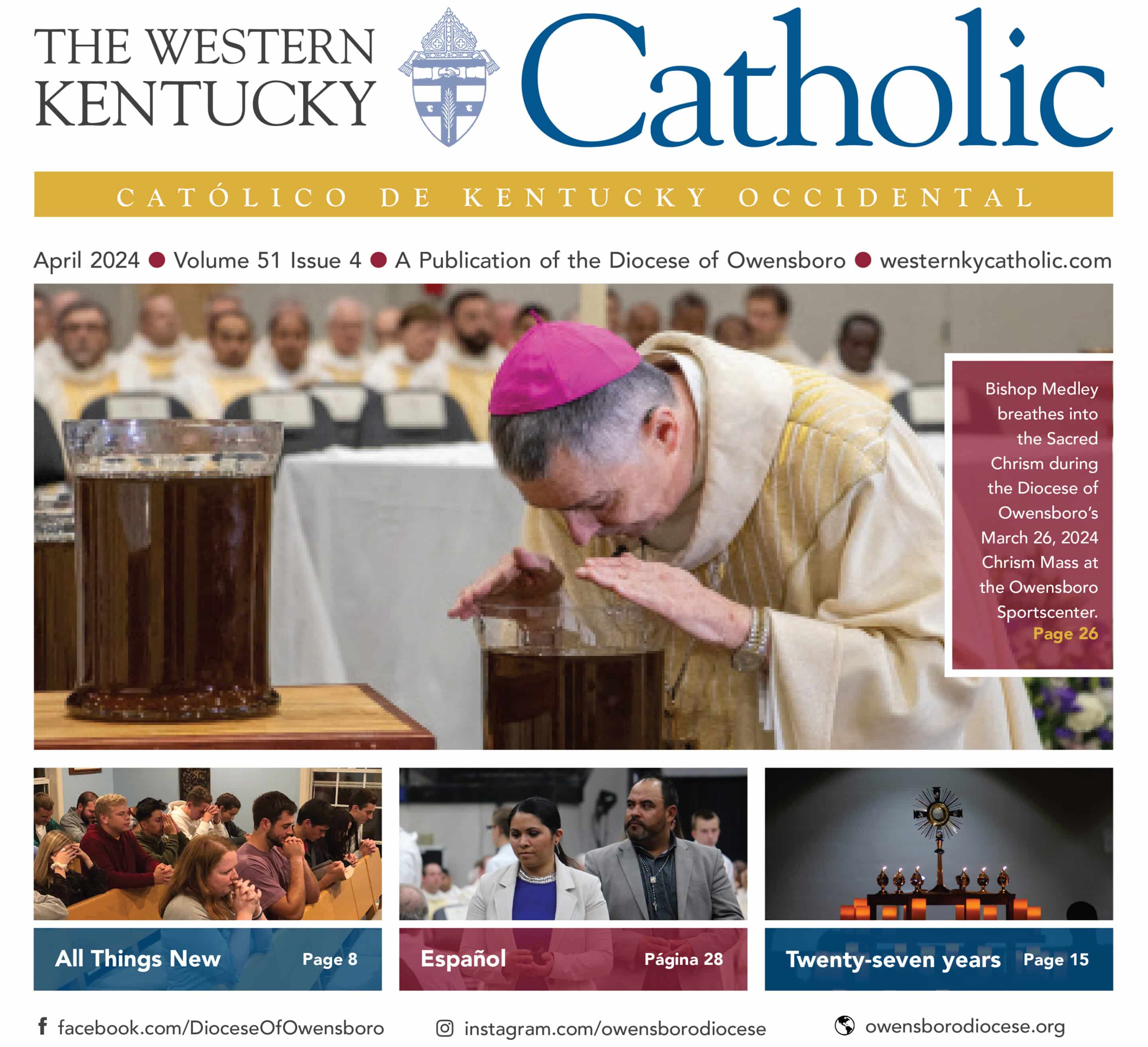
Several priests in an audience with Pope Pius XII in 1950, the same year the new guidelines were issued. Priests from the Diocese of Owensboro pictured are Frs. Charles DeNardi, Thomas Libs, Ed Russell, Rudalph Carrico, Leo Dienes, and Joseph Spalding. COURTESY OF ARCHIVES
What did the Lenten season look like in 1950?
BY EDWARD WILSON, ARCHIVES
Most of us have heard stories of how much more demanding the Church was in our grandparents’ time. How much different was it though, really? How much more difficult would Lent be this year if we practiced as they did, say, 70 years ago? Well… you might be surprised.
Mortification is a term that is relatively foreign to most in our current society. It is the practice of denying oneself bodily comforts and pleasures. This helps us die to ourselves and draws us closer to Christ in His Passion. Mortification was a more prevalent theme in the Church in years past. In our current time, as Catholics, we focus heavily on utilizing our spiritual rigor to positively affect the world and those around us. Though this was also true of previous generations, there was also much more of a focus on personal suffering than there is now. In 1950, in an attempt to make fasting and abstinence rules more uniform, our first bishop, Bishop Francis Ridgley Cotton, released new guidelines for fasting and abstinence that were to be observed by all Catholics aged 21-59 during the Lenten season in the diocese.
So how much different are the guidelines of 1950 to the ones we currently observe? Though abstaining from meat on Lenten Fridays is consistent in both, the differences are significant. The most obvious difference between our current rules and those of 1950 is the number of days fasted. We currently fast on Ash Wednesday and Good Friday; two small meals and one average meal are permitted on these days. The 1950 guidelines instruct all Catholics of the appropriate age to fast every single weekday of Lent and the Holy Days designated. So, the 1950 guidelines had our grandparents fasting 33 days during Lent as opposed to our current two. The guidelines also “urged” “above all to refrain altogether from attendance, during the penitential season of Lent, at shows, parties, dances and such like public amusements.”
Though these measures may seem unnecessary or cruel to many in our day and age, the Church authorities of years past were simply acting on what they believed was best for the salvation of souls. In the guidelines the bishop encouraged the priests to “endeavor… to impress upon all the necessity of penance and mortification if we wish to save our souls.” This was also not all the result of Bishop Cotton’s ascetic insistencies. The Catholic hierarchy all throughout America was pushing to further standardize the practices.
So, are you going to attempt the Diocese of Owensboro Lenten guidelines of 1950 this Lent? Maybe you could make an internet challenge out of it and go viral. Whatever you do I hope it deepens your relationship with Christ. I suspect most of us will stick with more modern Lenten practices, however, especially since a good hair shirt is so hard to find now a days, even with the internet!
Edward Wilson is the director of the Diocese of Owensboro’s Archives and the Archives of the Ursuline Sisters of Mount Saint Joseph. Comments and questions may be sent to [email protected].
Originally printed in the March 2022 issue of The Western Kentucky Catholic.

